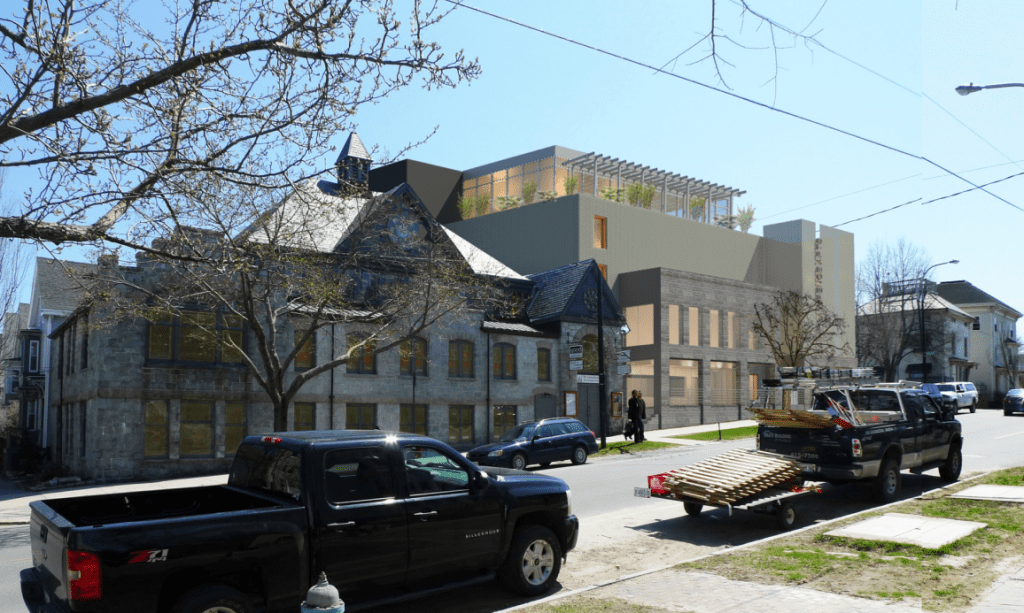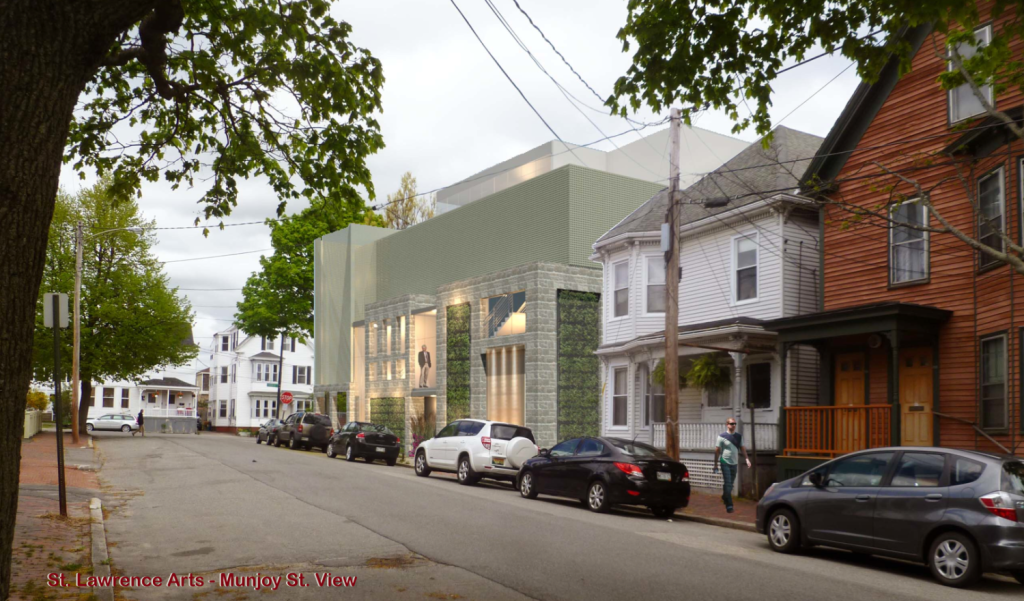The operators of the St. Lawrence Arts Center are offering to pay $70,000 a year to increase the frequency of bus service on Congress Street as part of the group’s proposal for a 401-seat performance hall on Munjoy Hill in Portland.
But some local residents expressed continued concerns Tuesday that, without dedicated parking for the expanded arts center, the additional traffic could exacerbate an already-tight parking situation.
“With this situation we may be reaching a tipping point,” said Munjoy Hill resident Ralph Carmona.
The St. Lawrence Arts Center project came before the Planning Board on the same night as two significant housing developments on Portland’s eastern peninsula. Taken together, the three projects – located within a half-mile of one another – underscore how the once-blighted area has transitioned into one of the city’s hot spots for development.
The Friends of the St. Lawrence Arts Center’s latest proposal is not substantially different from a version reviewed by the Planning Board earlier this year, although the center has fleshed out the parking and transportation plan.
The center is seeking city approval to construct a modern, 14,745-square-foot building next to the existing Parish Hall Theater on a vacant Congress Street lot where the St. Lawrence church sanctuary once stood. The new facility would feature a stage and seating for just over 400 people, allowing the center to host much larger events than the 110-seat Parish Hall.
Although some residents continued to describe the proposed facility as too large and out of scale for the neighborhood, most of those who spoke as well as Planning Board members praised the building’s latest design. The proposed building, which must also pass muster with Portland’s Historic Preservation Board, is rectangular but features a mix of granite, glass and landscaping that won praise from speakers Tuesday.
“I think this design will make the neighborhood very exciting and I’m really looking forward to it,” said Jeff Hotchkiss, who lives nearby on Congress Street.
Much of the discussion Tuesday focused on parking options for would-be visitors – or a lack thereof.
The Friends group is not proposing any dedicated parking. Instead, it would encourage show-goers to use mass transit and would cover the costs for ticket holders to park in city garages for up to three hours.
The organization has proposed paying $70,000 annually – paid for with a $5-per-ticket surcharge – to Greater Portland Metro to expand bus service on the Congress Street route. The additional funding could allow buses to run more often throughout the day but also later into the night, representatives said. Center and Metro officials also promised aggressive marketing to educate the public about the expansion.
Glenn Fenton, chief transportation officer for Metro, said the additional money could allow buses to run every 30 minutes during the busiest evening hours, down from every 45 minutes. But arts center representatives pointed out Metro officials hope to have buses running every 20 minutes by the time the new center is built in 2017, so the additional money could lower that figure to 15-minute intervals.
“It is going to benefit the neighborhood as a whole because when St. Lawrence doesn’t have an event, which is most of the time, they are still going to have the extended service,” said Thomas Gorrill, a principal with Gorrill-Palmer Consulting Engineers, which conducted a transportation study for the center.
Several neighbors were skeptical of the expanded Metro bus service and parking validation plan. Ann Landsberg questioned whether three hours was long enough to validate parking at garages, especially if people wanted to eat before or after a show. That concern combined with the Metro buses’ still-limited schedule would likely prompt most ticket holders to seek on-street parking near the center.
Landsberg also said that while the latest design is far better than the original, it was still “way too big.”
“Munjoy Hill has been invaded by a lot of large buildings,” Landsberg said. “Sacrifices will have to be made and this feels like one more.”
Ross Fields of Turner Street said human behavior is difficult to change. And while that may be possible over the course of several years, Fields said that may be too long for the center’s plan to work.
Other residents suggested that the situation will be substantially worse in winter when parking is even more limited because of snow.
Other neighbors lauded the center’s plan and urged the board to recommend the project to the full City Council.
Jonathan Radtke, a resident of nearby Monument Street, credited the St. Lawrence Arts Center with helping lead the “renaissance” that turned a once-blighted neighborhood into a thriving arts and business scene. Radtke predicted the project will result in a better, more vibrant city overall.
“Parking is always a hassle in the city,” he said. “If the city bases decisions on parking, you turn (Portland) into a museum and then it dies.”
Planning board members expressed concerns about the parking plan and requested more information in advance of a public hearing on the project, potentially to be held next month. The board will then make a recommendation to the City Council.
The board also reviewed aspects of two other rezoning requests for residential projects. It will hold public hearings on those projects and vote on them during later meetings.
Developers Jed Rathband and Ron Gan are seeking to build 14 townhouses on two lots at 145-155 Washington Ave. Prices for the three-level townhouses would start at $459,000. The building would also feature commercial space that Rathband and Gan said they hope to fill with a bakery, café or small restaurant.
Most of the handful of speakers praised the project. The board also seemed disinclined to accept a city staff proposal to apply a broader zoning classification.
The second project, proposed by Redfern Properties LLC, calls for a four-story, 53-apartment building on Anderson Street, between Fox and Everett streets and across from Kennedy Park in the East Bayside neighborhood. That project would also include retail space on the ground floor.
The apartments would be “market rate” – meaning none of the units will be set aside as subsidized housing – and would be targeted toward the “midscale” sector of the housing market.
But some residents expressed concerns about the scale of the building as well as traffic flow at an intersection that already has a higher crash rate.
Send questions/comments to the editors.








Comments are no longer available on this story